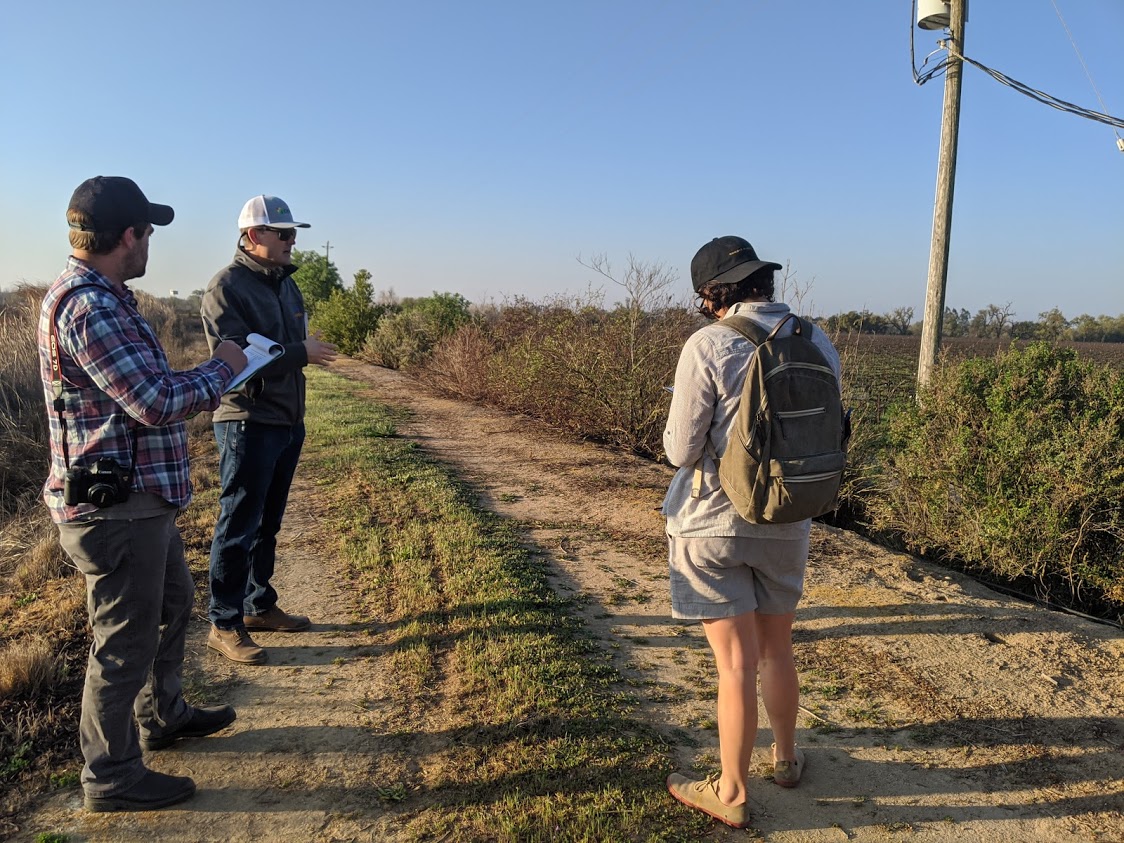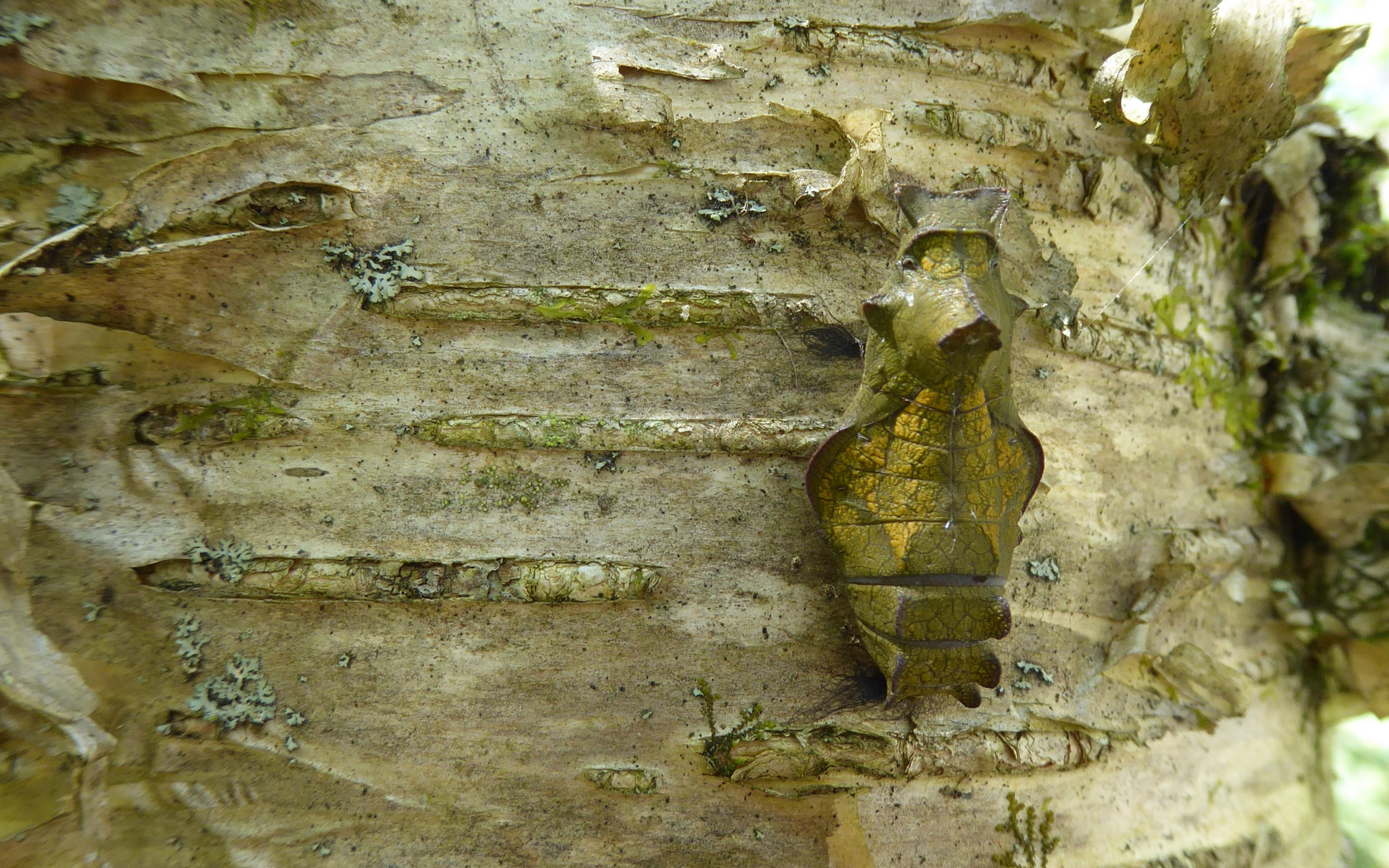Select updates from our team of restoration ecologists, entomologists, plant ecologists, and researchers.
The Xerces Society manages the largest pollinator conservation program in the world. We work with people from all walks of life to create habitat for bees, butterflies, and other beneficial insects—and hundreds of thousands of acres of flower-rich habitat have been planted. We also offer certifications: Bee Better Certified for farmers and food companies who are committed to supporting pollinator conservation in agricultural lands, and Bee City USA and Bee Campus USA for cities and colleges dedicated to making their community safer for pollinators.
With staff based in more than a dozen states, and offering a diverse array of expertise, it can be challenging to summarize the impactful work being done. We compile updates from pollinator team members into regular digests. In this edition, Jessa Kay Cruz gives a view into work being done with vineyards in California, and Nancy Lee Adamson shares her experience of how community science creates connections between people and nature.
Exploring Bee Better Certified in California Vineyards
Jessa Kay Cruz, with Liz Robertson and Cameron Newell.
California’s winegrape industry in has shown a strong interest in protecting pollinators and promoting natural enemies in vineyards by creating habitat and reducing pesticide impacts, and has a history of working closely with the Xerces Society and other wildlife conservation partners. And with over 600,000 acres of vineyards in the state, winegrape growers seem like a great fit for Xerces’ Bee Better Certified program. In addition, direct marketing of wine provides a close connection between producer and consumer, increasing the likelihood of successful adoption of a certification program such as Bee Better Certified.
 This beautiful vineyard in Amador County is one of the five vineyards participating in this project. (Photo: Xerces Society / Jessa Kay Cruz.)
This beautiful vineyard in Amador County is one of the five vineyards participating in this project. (Photo: Xerces Society / Jessa Kay Cruz.)
In the fall of 2019, Xerces received a Conservation Innovation Grant (CIG) from the USDA’s Natural Resource Conservation Service to demonstrate the benefits of Bee Better Certified within the wine industry. By providing technical and financial support to bring these vineyards to certification, we hope to accelerate adoption of Bee Better Certified and NRCS wildlife and resource conservation goals across the industry.
Although winegrapes are not bee pollinated, a great thing about Bee Better Certified is that the habitat and management practices it encourages help to support a wide range of other beneficial insects beyond bees. These insects help to control pests in the vineyards, breakdown and cycle nutrients, and increase water infiltration—to name just a few benefits!
To kick off the implementation stage of the project, we conducted site visits at the four participating vineyards, which span four different California counties. (We’re glad to note that none of these vineyards were directly impacted by the current wildfires.) During these visits we assessed the potential for habitat and discussed the pesticide practices outlined under Bee Better Certified. All of the growers are excited about the project and happy to be receiving assistance with the certification process from start to finish.

Bee Better Certified staff Cameron Newell and Liz Robertson examine a native plant hedgerow along with Chris Storm of Vino Farms in Lockeford, CA. (Photo: Xerces Society / Jessa Kay Cruz.)
Working with Partners to Promote Community Science
Nancy Lee Adamson
For me, not being able to do in-person outreach events has been one of the harder parts of recent months. With many people spending more time outside, we at the Xerces Society hope to continue to foster connections with the wildlife around us. A lot of learning and gratification can come from participating in community science projects in your own backyard, using tools like Bumble Bee Watch[MS1] and Western Monarch Milkweed Mapper[MS2] , finding out the names of those bee-covered native plants you see on your neighborhood walks with the Seek app by iNaturalist, or attending webinars (including those by Xerces[MS3] ).
A highlight of my year is volunteering at the Mount Roger’s Naturalist Rally, an old-fashioned gathering of young and old, city and country folk organized by the Blue Ridge Discovery Center[MS4] (BRDC) each Mother’s Day weekend. A wonderful mix of people come together to share joy in every bit of nature and community in this sparsely populated region of southwest Virginia with the state’s highest peak.
Since giving the Friday night opening talk several years ago, I’ve helped lead a wildflower walk with John Kell, a biology professor at Radford University. Faced with not being able to host an in-person gathering in-person, the BRDC came up with a backyard edition. Offering classes remotely using webinars (including Barbara Kingsolver giving the Friday keynote), they encouraged everyone to go outside, document nature using the iNaturalist app, its sister app Seek, and still connect with other rally participants. They planned a 10-day bioblitz called the Mount Rogers Naturalist Rally: Backyard Edition. Allen Boynton, an iNaturalist whiz, gave a webinar on how to use the app, highlighting some of the additional features the app and website provide for learning about nature and connecting with others near and far. Aaron Floyd and Cade Campbell gave another great presentation on using both iNaturalist and Seek[MS5] in the field. Seek is wonderful as an identification tool!

Bark or butterfly? Do you think it’s by chance that a pipevine swallowtail caterpillar chose this yellow birch when forming a chrysalis? Photos shared on sites like iNaturalist can help us understand more connections in nature. (Photo: Nancy Lee Adamson.)
The Mount Roger’s rally melds beautifully with Xerces’ mission and I wanted to share some of the benefits I experienced personally. Joining the rally project and having my own backyard presentation to prepare for, I started using the iNaturalist app as often as I could—and became much more adept at using it (Allen Boynton recommends the web version for bulk uploads and other features). As you upload, the app offers identification suggestions based on its photo database. I’m hooked now and will likely continue documenting species. I also relooked at some of my old entries and found that a renowned bee biologist, John Ascher, had been taking a look. If you are not sure what you’re photographing, someone in the iNaturalist community will eventually help you identify it. The same goes for other community science projects that Xerces partners on, such as Bumble Bee Watch[MS6] , and the bumble bee atlas projects we have for the Pacific Northwest, Nebraska, and Missouri. Elsewhere, biologist Sam Droege at the U.S. Geological Survey is encouraging people to look for pollen-specialist bees on their host plants since we do not have recent photographs documenting them. To guide you, check out lists of host plants and bees[MS7] he helped Jarrod Fowler, who previously worked for Xerces, develop.
The records you make will help us better understand connections in our natural communities. For example, a photograph I took of a pipevine swallowtail butterfly chrysalis on yellow birch (Betula allegheniensis) shows how perfectly camouflaged the chrysalis is on that tree. As we document more wildlife in nature, we will be able to see patterns that otherwise might remain hidden. I hope you’ll be inspired to join Bumble Bee Watch, iNaturalist, and other community science projects to help Xerces and the rest of the conservation community improve awareness and understanding of the invertebrates and other wildlife that enrich our communities and our lives.
Further Reading
Learn more about the Xerces Society’s Pollinator Conservation Program
Find out how you can help Bring Back the Pollinators
Join a community science project





